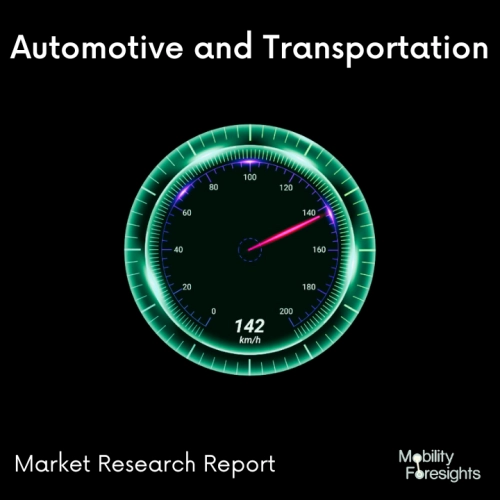
- Get in Touch with Us

Last Updated: Apr 25, 2025 | Study Period: 2024-2030
An EV key fob is an electronic device that is used to start and control an electric vehicle (EV). It is a small device that looks like a regular key fob, but it has a few differences. The EV key fob is programmed with a unique code that allows it to communicate with the EV's computer system.
This code also allows the key fob to be used as a security measure to prevent unauthorized access to the vehicle. When the key fob is inserted into the EV's ignition, the vehicle's computer system recognizes the code and unlocks the doors and other features of the vehicle.
The key fob also contains other features, such as a panic button, remote start, and even a remote door lock/unlock feature.
The EV key fob is an important part of the EV experience, as it provides convenience and security for the driver. With the key fob, drivers can easily access and control their vehicles from a distance and in a more secure manner. Additionally, the key fob allows drivers to easily find their vehicles in a crowded parking lot or garage.
The key fob is also a great way to protect against theft, as it prevents unauthorized access to the vehicle. Finally, the key fob can be programmed to store important information about the vehicle, such as its mileage and service history, which can be accessed at any time.

The Global EV Key fob market accounted for $XX Billion in 2023 and is anticipated to reach $XX Billion by 2030, registering a CAGR of XX% from 2024 to 2030.
In addition to aiming to strengthen Toyota's commitment to a carbon-neutral future, the all-electric Toyota bZ4X SUV achieves so in flair. The bZ4X, poised to create waves in the Battery Electric Vehicle (BEV) market, combines sleek, contemporary design with a plethora of technological capabilities on a very powerful platform.
The bZ4X is the first vehicle from Toyota to be released globally under the bZ series, and there will be additional bZ vehicles in the works that will aim to improve the BEV market for many years to come.
The bZ4X is a new generation of multifunctional cars, more than just an electric SUV. Drivers who choose the bZ4X Limited grade can also take advantage of the Remote Connect service's Toyota-first Digital Key feature. Owners can now easily share access to their vehicles. facilitating the vehicle's locking, unlocking, and starting using the Toyota App.
Polestar Releases a New Electronic Key. Two new models of Polestar 2 EV have been introduced by Polestar: a new single-motor model and an entry-level dual-motor model. At the unveiling, Polestar said that the new Polestar app would incorporate its Digital Key, enabling drivers to operate their vehicles with only a tap of their smartphones.
Polestar said that owners of Polestar 2 will start receiving the new app and Digital Key over the air (OTA) and that the company will provide free software upgrades.
Owners of Polestar 2 can use their linked smartphone in addition to the conventional key fob thanks to the new digital key technology. Furthermore, the most recent OTA update activates additional integrated car features in the Polestar app.
Polestar claims that when creating the digital key, security was given "the highest priority." The Polestar 2 is equipped with eighteen Bluetooth sensors that facilitate communication between the associated smartphone and the automobile in order to ensure "accuracy, secure authentication, and ease of use when accessing and starting the car."
The approaching paired device is detected by the sensors. The sensors enable the doors, tailgate, or charging lock button to be opened when it approaches within arm's reach. To "safeguard against unintentional starting," the associated device must be positioned inside the vehicle before it can be started, according to the manufacturer.
| Sl no | Topic |
| 1 | Market Segmentation |
| 2 | Scope of the report |
| 3 | Abbreviations |
| 4 | Research Methodology |
| 5 | Executive Summary |
| 6 | Introdauction |
| 7 | Insights from Industry stakeholders |
| 8 | Cost breakdown of Product by sub-components and average profit margin |
| 9 | Disruptive innovation in theIndustry |
| 10 | Technology trends in the Industry |
| 11 | Consumer trends in the industry |
| 12 | Recent Production Milestones |
| 13 | Component Manufacturing in US, EU and China |
| 14 | COVID-19 impact on overall market |
| 15 | COVID-19 impact on Production of components |
| 16 | COVID-19 impact on Point of sale |
| 17 | Market Segmentation, Dynamics and Forecast by Geography, 2024-2030 |
| 18 | Market Segmentation, Dynamics and Forecast by Product Type, 2024-2030 |
| 19 | Market Segmentation, Dynamics and Forecast by Application, 2024-2030 |
| 20 | Market Segmentation, Dynamics and Forecast by End use, 2024-2030 |
| 21 | Product installation rate by OEM, 2023 |
| 22 | Incline/Decline in Average B-2-B selling price in past 5 years |
| 23 | Competition from substitute products |
| 24 | Gross margin and average profitability of suppliers |
| 25 | New product development in past 12 months |
| 26 | M&A in past 12 months |
| 27 | Growth strategy of leading players |
| 28 | Market share of vendors, 2023 |
| 29 | Company Profiles |
| 30 | Unmet needs and opportunity for new suppliers |
| 31 | Conclusion |
| 32 | Appendix |